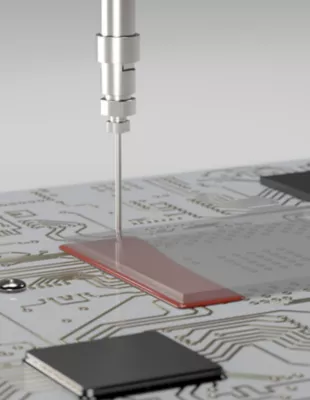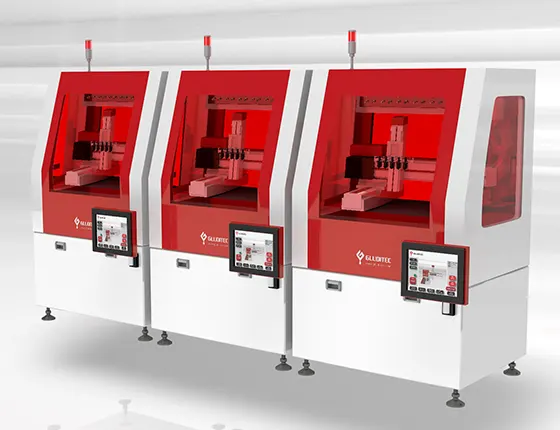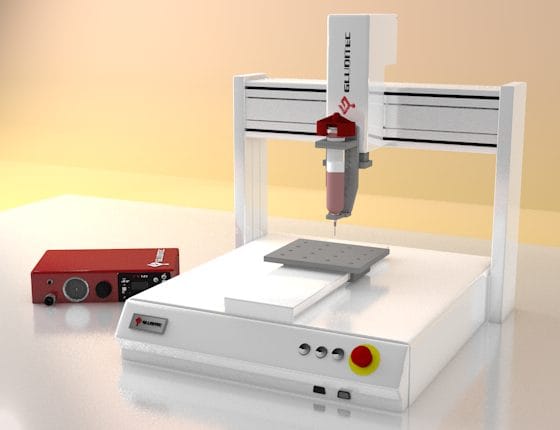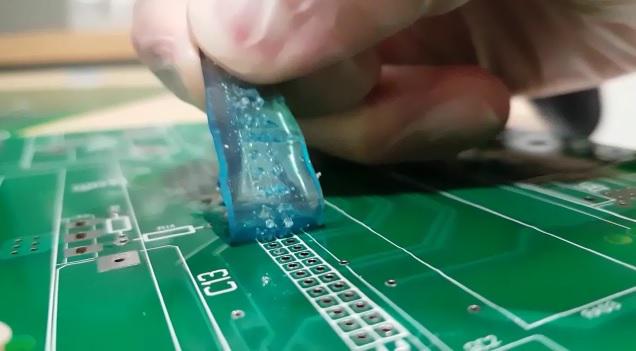What is Underfill?
Component underfill is a process in which a type of liquid material connects the chip to the board by capillary action and then is heated to cure. In this process the underfill encapsulates the bottom side of the silicon chip, covering the fragile interconnected pads between the chip’s bottom side and the PCB’s top side.
Why underfill?
Underfills can be used to help
- Reinforce electronic components and minimize stress.
- Offer excellent protection of solder joints during thermal cycling, provide reliability against stress.
The underfill helps to prevent mechanical fatigue and extend the lifespan of the assembly. This mechanical reinforcement improves dropping performance and raises the thermal cycling performance for CSP, Wafer Level Chip Scale Packages (WLCSP), and Flip Chip components by about seven to ten times.
Trends in electronic packaging designs toward smaller, stacked, and high pitch configurations increase the demands on electronic packaging materials requiring better thermomechanical and processing performance. For example, new underfill materials for electronic packaging need to have a lower CTE for resistance to thermal fatigue, while new thermal interface materials (TIMs) need to be more thermally conductive for cooling a heat-generating source while maintaining low viscosity with increased
filler loadings.
That is why we need to carefully select the right underfill materials for our PCBs applications
Three types of Underfills
1. Full Underfill
| Fully dispense the under part of the chip through capillary flow |  |
2. Corner bondingIn corner bonding process, adhesive is placed on the PCB in dots at the corner of BGA attachment points prior to placing the BGA. When the circuit board is re-flowed, the material cures and provides additional shock and bending resistance to the assembly. |

|
3. Edge bondingEdge bonding is gaining popularity as an alternative to underfill and corner bonding. In this process, a BGA package is placed and reflowed; then an adhesive is dispensed along the edge or corner of the package. |

|
Materials and equipment for Underfill
Equipment

Inline Dispensing System for Underfilling

Desktop Dispensing System for Underfill
Materials
Conventional underfill materials come in one- and two-part formulations, and deciding whether a one- or two-part is appropriate depends on:
- Curing temperature and time requirements
- Viscosity limitation (how well can underfills flow underneath a package?)
- Chemical resistance (would underfills be subjected to a corrosive environment?)
Typically, Epoxy adhesive which constitutes of silicone oxide particle will play the task of underfilling electronic components on PCBs
What makes Epoxy adhesive a suitable choice for underfilling is it can balance among those key attributes:
- Viscosity
- Total chloride content
- Filler loading (for coefficient of thermal expansion (CTE) and modulus modification)
- Adhesion
- Flux compatibility
- Toughness
- Dispense-ability flow
- Package level reliability performance including preconditioning, temperature cycle or shock, highly accelerated stress testing (HAST).
Prostech provides a wide range of epoxy adhesive which comes in distinct characteristics for different applications including underfills
Find out more about our Epoxy range of adhesive at: https://prostech.vn/products/application/adhesives/epoxy/
Need more consultants to choose the right underfill products for your application, contact us:






